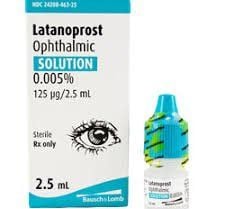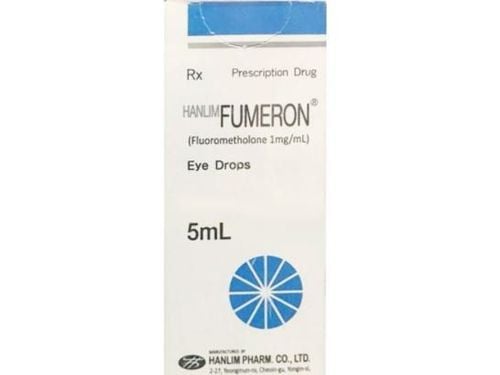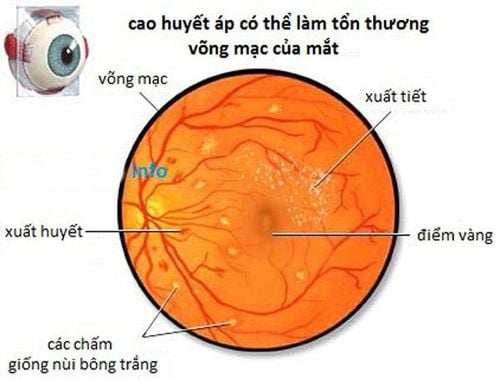This is an automatically translated article.
The article was professionally consulted by Doctor, Associate Professor, Dr. Hoang Thi Minh Chau - Department of Interspecialties - Vinmec Times City International Hospital.Keratitis is a dangerous disease that can leave severe sequelae, directly affecting the patient's vision. Understanding the causes of disease, symptoms and ways to prevent disease helps us to timely detect the disease, timely treatment to avoid leaving sequelae.
1. Causes of keratitis
The cornea is the thin, transparent layer of tissue in front of the eyeball that is first exposed to light, allowing light to pass through to help the eye see. Corneal ulcers are when the cornea is scratched and infected, causing an inflammatory response. This is a very dangerous disease because it can leave permanent sequelae such as corneal scarring, protrusion of the eyeball, perforation of the eyeball, even partial or total loss of vision.Causes of keratitis include:
Superficial corneal epithelium: Caused mainly by viruses such as Herpes, Shingles, Adenovirus. Or due to disorders of the secretion of tears (dry eyes), open eyelids, poisoning. Deep keratitis: The causative agent is usually blood-borne, can be caused by tuberculosis, syphilis, leprosy, virus,... Fibrous keratitis: Usually caused by dry eyes, which can be caused by consuming a lot of tears. Frequently staying up at night, insomnia, eyes not closed due to paralysis VII, open eyelids,...), due to not producing enough tears (vitamin A deficiency, drug allergies, some eye drops,... .) Corneal ulcer: the cause can be caused by bacteria, virus, fungus, amoeba, microsporidia,... Risk factors for corneal ulcer that you need to watch out for such as: Complications of trachoma such as: ingrown hairs, dry eyes,...; dry eyes due to vitamin A deficiency; nerve damage such as Paralysis VII (causes eyes to not close properly); eye trauma such as scratching or tearing the cornea; due to improper use of contact lenses,...
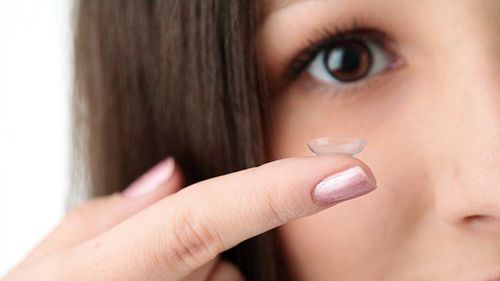
Dùng kính áp tròng không đúng cách cũng gây nên viêm giác mạc.
2. Symptoms of keratitis
When your eyes appear the following signs, quickly go to an eye clinic or an eye specialist hospital for timely diagnosis:Discomfort, eyestrain, feeling of foreign body in the eye. Dull pain in the eyes, burning sensation in the eyes. Dizziness, fear of light. Lots of tears. Red eyes, blurred vision. Corneal opacities, the center of the cornea often appears white spots. Swollen eyelids, difficulty opening eyes. Lots of slime, white or yellow eyes.
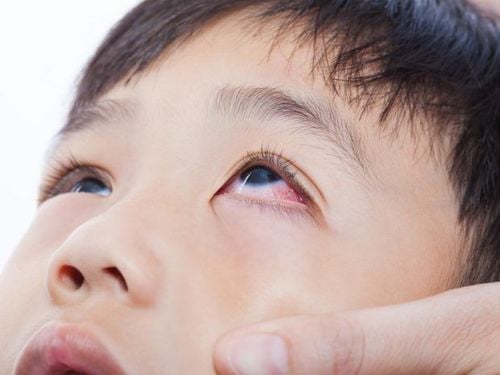
Khó chịu, mỏi mắt, có cảm giác có dị vật trong mắt có thể là những triệu chứng của viêm giác mạc mắt.
3. Treatment of keratitis
Patients with keratitis need to be treated early, to avoid the risk of affecting vision later. Usually, keratitis will be treated with medication. In severe cases that cannot be treated with drugs, the patient can be operated on depending on the condition with different surgical methods: Conjunctival coating, amniotic membrane graft, corneal transplant,...Some Notes when treating keratitis:
Should not cover the eye because it will create conditions for microorganisms to grow stronger. Wear sunglasses to help protect your eyes from environmental stimuli. Do not wear contact lenses or make-up during treatment. Avoid rubbing your eyes or objects that affect the eyes.
4. How to prevent keratitis?
Use eye protection measures when working in smoky, dusty environments,... Use sunglasses when moving on the street to avoid dust and foreign objects flying into the eyes. Use eye protection in case of cleft palate. Definitive treatment of eye diseases and systemic diseases that are at risk of causing keratitis. Do not rub your eyes with your hands, do not use objects to remove foreign bodies, and do not apply tobacco products directly into your eyes. Get enough vitamin A for your eyes and blink often to avoid dry eyes. Pay attention when using contact lenses to clean before and after wearing glasses. Keratitis is very common and is one of the causes of vision loss and blindness. Because of the serious complications left by the disease, when patients see uncomfortable symptoms in the eyes, they should go to reputable medical facilities for timely examination, diagnosis and treatment.




